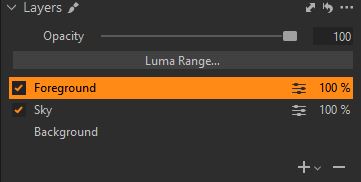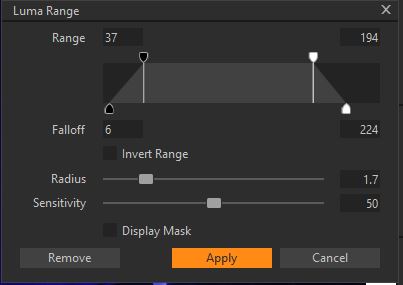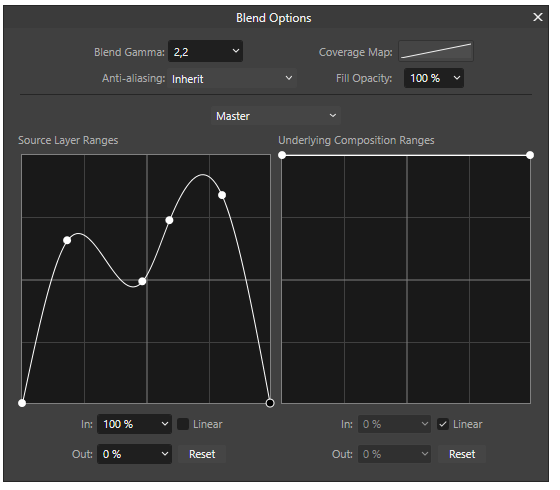Not at all. From time to time I’ve tried some Lightroom versions but never go further.
I’m a happy DxO user since Optics Pro v3.
And I really hope DxO will not focus on a layer-system.
Not at all. From time to time I’ve tried some Lightroom versions but never go further.
I’m a happy DxO user since Optics Pro v3.
And I really hope DxO will not focus on a layer-system.
Really hope this too.
Indeed local adjustment have some nice qualities but they are very ineficient in a lot a scenarii.
And local adjustment slider system does not allow easy precise adjustments (should be rewritten too).
Don’t blame me on this and show me how to easily get fast and precise result with the worst ones : temperature/tint and hue. (Don’t show me how it works, I know that. But how yo use it efficiently. There is no way).
I don’t want to be rude, but this is the kind of detail that makes me think devellopers does not use their software.
But we already have layers for local adjustments…

You can:
Just about the only thing you can’t do is change the z-order or blending mode.
thanks joanna.
I know that.
An efficient layer system should come with other ways of masking too.
Well, you never know what’s in the pipeline ![]()
I’m pretty sure they at least think about it.
This is a so important feature.
Yes - that’s what got me started with Optics Pro / PL.
I agree that layers with blending modes overall(not just with LAs) would be a great addition to Photolab and would be significant progress toward keeping in-step with the competition. Though it is not necessary to PL’s core function as a RAW processor(the best IMO), it would be a step in the right direction for future-proofing PL’s place as (IMO) the best in the world.
Hope it wil be a complete and well thought feature ![]()
I was forced to use Lightroom and got the absolutely awful version 1.0. Previously I had the commercial version of the Danish raising star company Pixmantec´s and RAW-developer RAW Shooter Premium, when Adobe made a hostile take-over of that company and just killed it. RAWShooter had a free version that really won market shares and that irritated Adobe so bad that they decided to kill it. All of us that had bought the Premium-version got Lightroom 1.0 for free. What a bargain you might think but we were left without any migration-path from RAWShooter. We were many that got really pissed by that fact.
WIKI-history:
" On June 26, 2006, Adobe announced that it had acquired the technology of Pixmantec, developers of the Rawshooter image processing software.[[19]](Adobe Lightroom - Wikipedia)
Further beta releases followed. Notable releases included Beta 3 on July 18, 2006, which added support for Microsoft Windows systems. On September 25, 2006, Beta 4 was released, which saw the program merged into the Photoshop product range, followed by a minor update on October 19, which was released as Beta 4.1.
On January 29, 2007, Adobe announced that Lightroom would ship on February 19, 2007, list priced at $299 US, £199 UK." (End of quote)
The strange thing was that they wrote that Adobe acquired the “technology of Pixmantec”, because they seem to have learned nothing from that company. We loved RAWShooter because it´s very good preview quality. It took many many years before Lightroom was even close. Maybe the danes working for Pixmantec decided to start to work for Phase One with the development of Capture One instead.
As Joanna really have stated Photolab already has a mask-system but it is limited to the bolted-on feature set Local Adjustment. Without a layer system for local adjustments, you will find yourself getting back to old DXO Optics Pro. Optics Pro did not have any means at all for local adjustment. I don´t think anyone want to go back that road again. The Local Adjustments in Photolab was a very very important improvement when it happened but today it´s getting quite dated. They will have to do something about the systems lack of precision and lack of efficiency. Now even slow-footed Adobe is running circles around Photolab when it comes to masking and layers. I didn´t really see that coming a few years ago.
I agree, Photolab is very transparent towards the filesystem and that is a very BIG advantage.
Weii, i’m sure you do know what’s in “the pipeline” but have signed a “non disclusure agreement”, so you just can’t tell.
Yes, one of the best improvements to Photolab was when they changed to a layer based UI local adjustment.
Very similar to Capture One except C1 offers more sophisticated adjustments/options which is to be expected as they have been doing it for much longer.

For example instead of a single slider to select luma values they use a fairly standard 4 point adjustment that lets the user select the range of Luma values and control the fade into the shadows and highlights. This also works on all types of mask.

I think DXO are well on the way to matching C1. I hope that adding things like editing of masks (rasterising masks), increasing mask selectivity luma/chroma, feathering/refining of masks etc are certainly doable now that DXO have done the hard work to establish a layers UI.
I think local adjustments should be a major area of focus going forward as Lightroom has set the bar very high with its new layer based AI masking. I don’t use LR but being able to mask a sky by pressing the “sky” button, selecting the eyes by pressing the “eyes” button, or the person by pressing the “people” button is rightly a “game changer”. DXO need to be very capable in local edits to stay in the game. The same is true for C1 regarding noise reduction. C1 is basically the only major raw converter that doesn’t have advanced noise reduction capability. The idea is to be competitive such that although a competitive product may be “better” in absolute terms your product is close enough to prevent loosing customers just on that aspect.
Turning that round means that now LR has advanced noise reduction will customers pay for something like Pure Raw?
So I hope DXO will narrow the gap between LR and C1 on local edits to enhance their existing advantages in lens correction and noise reduction. Software development can never stand still and companies must compete, which is why we are blessed with an abundance of good software.![]()
How to mask ?
Why to jump on one foot when walking with 2 is more confortable ?
LUMA RANGE FILTER:

PLUS a added CHROMA RANGE filter
All that as control above any Shaped Mask layer.
(Means way to create shapes too).
And yes, if DxO has to develop other AI module, I think this one (AI masking) would be the most needed (if really efficiently done).
Pixel editors have more masking complexity than raw converters but this increased complexity doesn’t bring much enhanced usability in the raw converter situation. If you need this degree of control you have normally moved to a pixel editor.
C1’s luma control is simple and intuitive providing the ability to choose the ranges using the normal 0-255 range rather than an arbitrary 0-100 scale sometimes used . The lower control points provide the feather adjustment and unlike some products with only a feather slider, feathering into the highlights or shadows can be independently set.
Whilst AI masking is certain to eventually become the industry standard I think the shift for DXO would be too great a task today. This is why I hope DXO will concentrate on improving local masking so that the “gap” between DXO and competitive products is narrowed enough to be “good enough”. Improving local adjustment masking is certainly doable from the great position they have already established which would then give them time for the step change to AI masking.
It can be difficult to look at your favourite product and see how it compares to the competition and what needs improving particularly if, for you, it does everything you need. However, you can’t buck the market.
Similarly C1 is in a difficult situation as it prices itself as a premier product but doesn’t have advanced noise reduction technology which is now very noticeable compared to the competition. C1 are concentrating on workflow improvements for high volume shooters. It’s a strategy and time will tell whether it can ignore basic functionality like noised reduction in favour of workflow.
But Photolab isn’t only a raw editor.
Some functions are already performed after demosaicing at pixel level I think (correct me if i’m wrong).
Why ? Can you develop ?
This would at least be a big improvment, but why to put only 4 points when you can put a curve ? And is 8bit control (0-255) so easier to develop than FP or say 16 bit control (0-1) ? Not sure it is that much more work (I’m not a developper, but I used to help in analyse when betatesting complicated softwares).
But it would be as simple to use as 4 points : just create 4 points if you only need that. And activate linear interpolation (year, ok. At least 2 interpolation modes needed - or a general curve module to create, usable anywhere then in the software. But I go too far here ![]() ).
).
It is already standard in some advanced compositing pipelines. But not alone ! And tweakable. AI is artificial and very sofisticated, but not intelligent.
Maybe, and if so (and it probably is so) I agree there are more important things to do.
I agree to better give a tweakable and able to give wanted result human control than an automatic (AI) but not perfect control.
But good enough must be good enough.
Sorry, here i’m lost (maybe because english is not my native langage and i’ve missed something important). Who can think it does everything needed ? And what is everything needed for photolab ?
It’s ok for studio shooting and it mainly targets this market : Tethering, very fine colors and value adjustments. High masking capabilities. No need for sofisticated noise reduction in studio environment.
At least only need for a photolab plugin if noise become problem …
I got curious - I never bought Capture One, but it is installed on my computer. It wants me to activate it. Before doing anything else, I watched this video:
Capture One Pro Tutorials | Interface Explained - YouTube
To be honest, there is already enough confusion in my brain from all the software I already have, and I decided years ago to just settle on PhotoLab.
Someone mentioned NIK up above - while DxO sells an enhance version, with a little searching the free version of NIK given away by Google does essentially the same thing. There are versions for Windows and Mac. I bought the version from DxO, but I don’t see any difference, at least not for the way I used to use NIK, and I’ve also decided to not use it any more, and just stick with PhotoLab, which I think is better for RAW images - which I couldn’t do with NIK.
Interesting to read all the new posts here, and interesting to see how Capture One works (in the video I linked to).
As to Adobe, I still have the basic yearly license for all their software, and I still have the version of Lightroom I paid for a lifetime ago before they changed to subscription.
One quick question here - once an image is edited in Capture One, and also edited in PhotoLab, what will the differences be, if any? Are they different only in how the tools are used, or does one of them create a “better” end result?